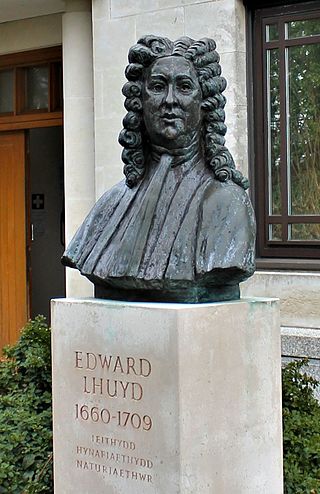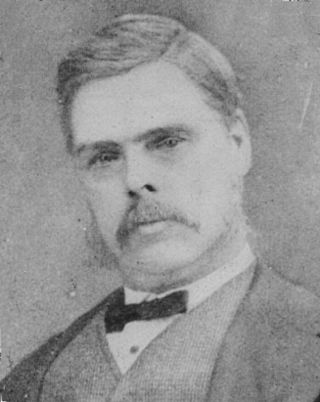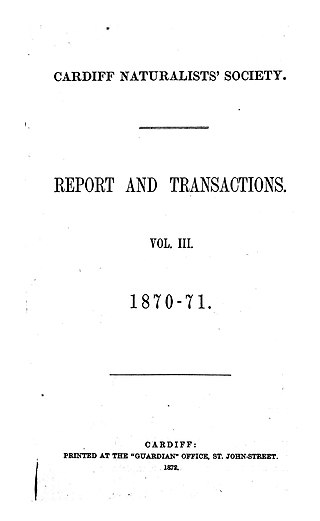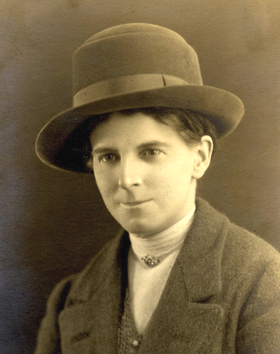Related Research Articles
The Linnean Society of London is a learned society dedicated to the study and dissemination of information concerning natural history, evolution, and taxonomy. It possesses several important biological specimen, manuscript and literature collections, and publishes academic journals and books on plant and animal biology. The society also awards a number of prestigious medals and prizes.

Thomas Pennant was a Welsh naturalist, traveller, writer and antiquarian. He was born and lived his whole life at his family estate, Downing Hall near Whitford, Flintshire, in Wales.

John Obadiah Westwood was an English entomologist and archaeologist also noted for his artistic talents. He published several illustrated works on insects and antiquities. He was among the first entomologists with an academic position at Oxford University. He was a natural theologian, staunchly anti-Darwinian, and sometimes adopted a quinarian viewpoint. Although he never travelled widely, he described species from around the world on the basis of specimens, especially of the larger, curious, and colourful species, obtained by naturalists and collectors in England.

Edward Lhuyd, also known as Edward Lhwyd and by other spellings, was a Welsh naturalist, botanist, herbalist, alchemist, scientist, linguist, geographer, and antiquary. He was the second Keeper of the University of Oxford's Ashmolean Museum, and published the first catalogue of fossils, the Lithophylacii Britannici Ichnographia.

National Museum Cardiff is a museum and art gallery in Cardiff, Wales. The museum is part of the wider network of Amgueddfa Cymru – Museum Wales. Entry is kept free by a grant from the Welsh Government.

Ralph Tate was a British-born botanist and geologist, who was later active in Australia.

William Thompson was an Irish naturalist celebrated for his founding studies of the natural history of Ireland, especially in ornithology and marine biology. Thompson published numerous notes on the distribution, breeding, eggs, habitat, song, plumage, behaviour, nesting and food of birds. These formed the basis of his four-volume The Natural History of Ireland, and were much used by contemporary and later authors such as Francis Orpen Morris.

Francis Talbot Day was an army surgeon and naturalist in the Madras Presidency who later became the Inspector-General of Fisheries in India and Burma. A pioneer ichthyologist, he described more than three hundred fishes in the two-volume work on The Fishes of India. He also wrote the fish volumes of the Fauna of British India series. He was also responsible for the introduction of trout into the Nilgiri hills, for which he received a medal from the French Societe d'Acclimatation. Many of his fish specimens are distributed across museums with only a small fraction deposited in the British Museum, an anomaly caused by a prolonged conflict with Albert Günther, the keeper of zoology there.

The Belfast Naturalists' Field Club is a club of naturalists based in Belfast, Northern Ireland. Founded in 1863, the club was an important part of the education system for Victorian naturalists and worked largely through first-hand field studies. It has been credited with playing an important role in the elucidation of glacial and post-glacial sea levels, climates and fossil beaches and issuing the first of the regional handbooks for meetings of the British Association for the Advancement of Science as far back as 1874. The club has four sections, Archeology & History, Botany, Geology and Zoology, and has published several books and a periodical. The Herbarium of the BNFC is now in the Ulster Museum.

Archaeologia Cambrensis is a Welsh archaeological and historical scholarly journal published annually by the Cambrian Archaeological Association. It contains historical essays, excavation reports, and book reviews, as well as society notes and accounts of field visits. The journal has included "much valuable material on the manuscripts, genealogy, heraldry, toponymy, folklore and literature of Wales".
Ceredigion is an annual local history journal about the history of the county of Ceredigion, Wales, published by Ceredigion Historical Society.
Brycheiniog is an annual historical and archaeological academic journal published by the Brecknock Society and Museum Friends, covering Brecknockshire in Wales.

Reports and Transactions of the Cardiff Naturalists' Society was an annual scientific journal published by the Cardiff Naturalists' Society, containing scholarly articles on geology, archaeology, natural history, and meteorology, as well as book reviews and society notes. The title started in 1867 and ceased publication in 1986. It is being digitized by the Welsh Journals Online project at the National Library of Wales. Scans of volumes 32 to 100 (1899–1986) are currently available.
Morgannwg: Transactions of the Glamorgan Local History Society is the annual English-language scholarly journal of the Glamorgan History Society, published since 1957, containing historical essays, archaeological reports and book reviews. It also contains society notes and meeting reports. The title comes from the Welsh word for Glamorgan.
The Woolhope Naturalists' Field Club is a society devoted to the natural history, geology, archaeology, and history of Herefordshire, England. Founded in 1851, it has had many notable members and played an important early role in the history of mycology in Britain.

Art in Cardiff refers to the culture of visual arts in Cardiff, capital city of Wales. The visual arts in Cardiff have a much more recent history than many British cities, due to it being a very small town until rapid growth took place in the mid nineteenth century. Cardiff School of Art originated in 1865 and the first major public art exhibition took place in 1870. The town became a city in 1905, after which time it gained further importance, for example with the creation of a new National Museum. Into the 21st century it has a thriving art scene.

Eleanor Vachell (1879–1948) was a Welsh botanist who is remembered especially for her work identifying and studying the flora of Glamorgan and her connection with the National Museum of Wales where she was the first woman to be a member of its Council and Court of Governors. The museum now holds her botanical diary, notes, books, records and specimens.

Charles Wilkins of Merthyr Tydfil, Glamorganshire, was a prolific writer of historical accounts of Wales and its industries. He produced pioneering reference works on the histories of Merthyr Tydfil and Newport; the coal, iron, and steel trades of South Wales; and Welsh literature. He was also founding editor of The Red Dragon: The National Magazine of Wales.

This is a bibliography of published works on the history of Wales. It includes published books, journals, and educational and academic history-related websites; it does not include self-published works, blogs or user-edited sites. Works may cover aspects of Welsh history inclusively or exclusively.
References
- ↑ Sheen, A. W. (1927). "The History of the Cardiff Naturalists' Society". Reports and Transactions of the Cardiff Naturalists' Society. 60. Cardiff: Cardiff Naturalists' Society: 110–129.
- ↑ "History". Cardiff Naturalists' Society. Retrieved 5 May 2015.
- ↑ "Reports and transactions (Cardiff Naturalists' Society), 1900–1981". Welsh Journals Online . Retrieved 5 May 2015.